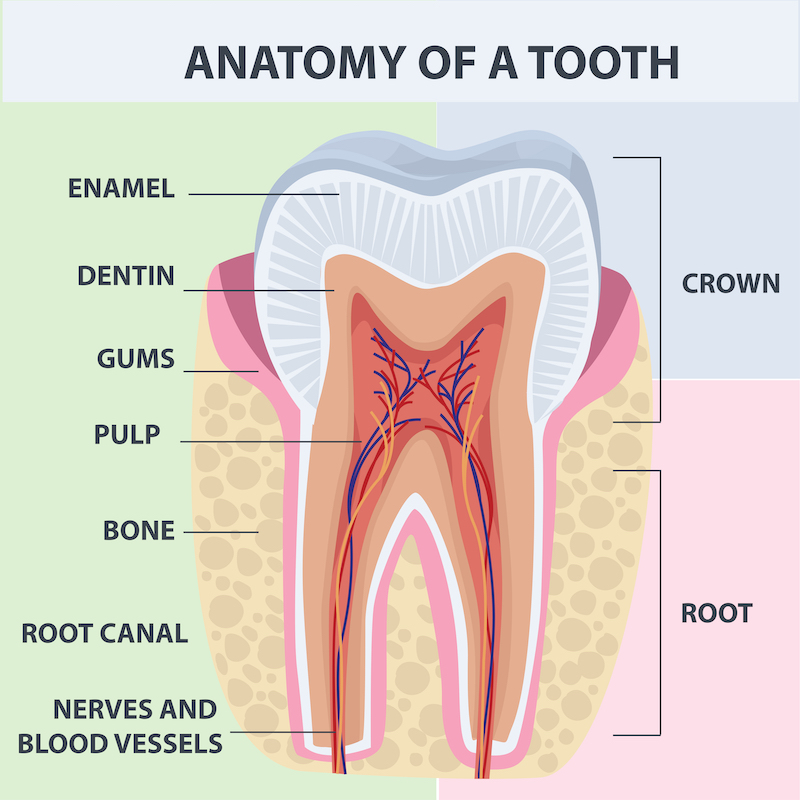Tooth Anatomy and Functions

Understanding the anatomy of the tooth and its functions is essential for maintaining a healthy smile and preventing dental issues like cavities and gum disease. By exploring the structure and purpose of the tooth, we can gain a deeper appreciation for this remarkable part of our bodies.
Enamel
The hardest substance in the body, on the outside of the tooth. It contains no living cells; tooth enamel cannot repair damage from decay or from wear. Only a dentist can correct these conditions.
Dentin
Softer than enamel, the second layer of the tooth. It contains microscopic tubules (small hollow tubes or canals). When dentin loses its protective covering (enamel), the tubules allow heat and cold or acidic or sticky foods to stimulate the nerves and cells inside the tooth, causing sensitivity.
Crown
The visible portion of the tooth that protrudes from the gum, covered by enamel.
Root
The part of the tooth that is embedded in the jawbone.
Pulp:
The deepest layer inside the tooth, consisting of nerves and blood vessels. If any bacteria gets past the enamel and dentin, the pulp becomes inflamed in an attempt to protect the tooth. Inflammation can cause pulpitis which can be very painful.
Cementum
Hard connective tissue covering the tooth root, giving attachment to the periodontal ligament.
Periodontal Ligament
Is a group of specialized connective tissue fibers that attach the tooth to the alveolar bone. The PDL inserts into root cementum on one side and onto alveolar bone on the other.
Nerve & Blood Supply
The root contains blood vessels and nerves, which supply blood and feeling to the whole tooth.
To learn more about your tooth anatomy and function, call us at (941) 957-3311



